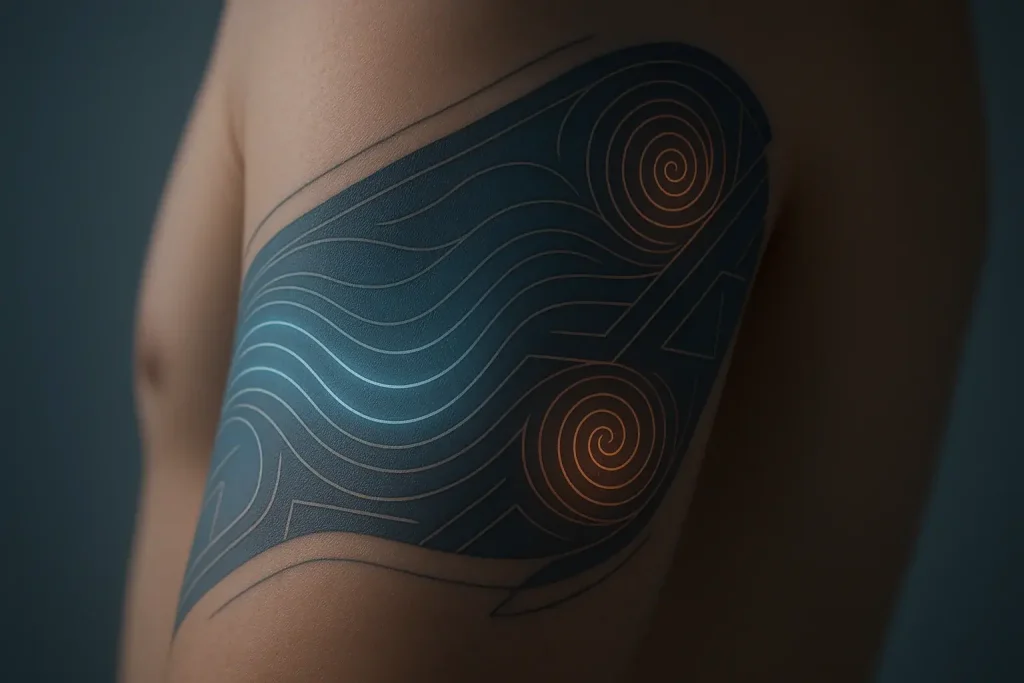The Invisible Revolution: Why Tiny Tech Powers Your Mood Tattoo
How do smart tattoos feel like real tattoos? Miniaturization is the critical answer. This extreme reduction in size defines their very existence as on-skin technology. Bulky gadgets offer no such subtlety. Tiny tech allows complete skin integration.
The core challenge? Monumental. Engineers integrate complex biosensors, tiny processors, and efficient power systems into near-invisible flexible electronics. This makes the technology not just small, but genuinely functional on living skin. For you, this means exceptional comfort and an almost undetectable presence. The tattoo becomes a continuous part of you.
Inside the Micro-World: Key Technologies Making Smart Tattoos Possible
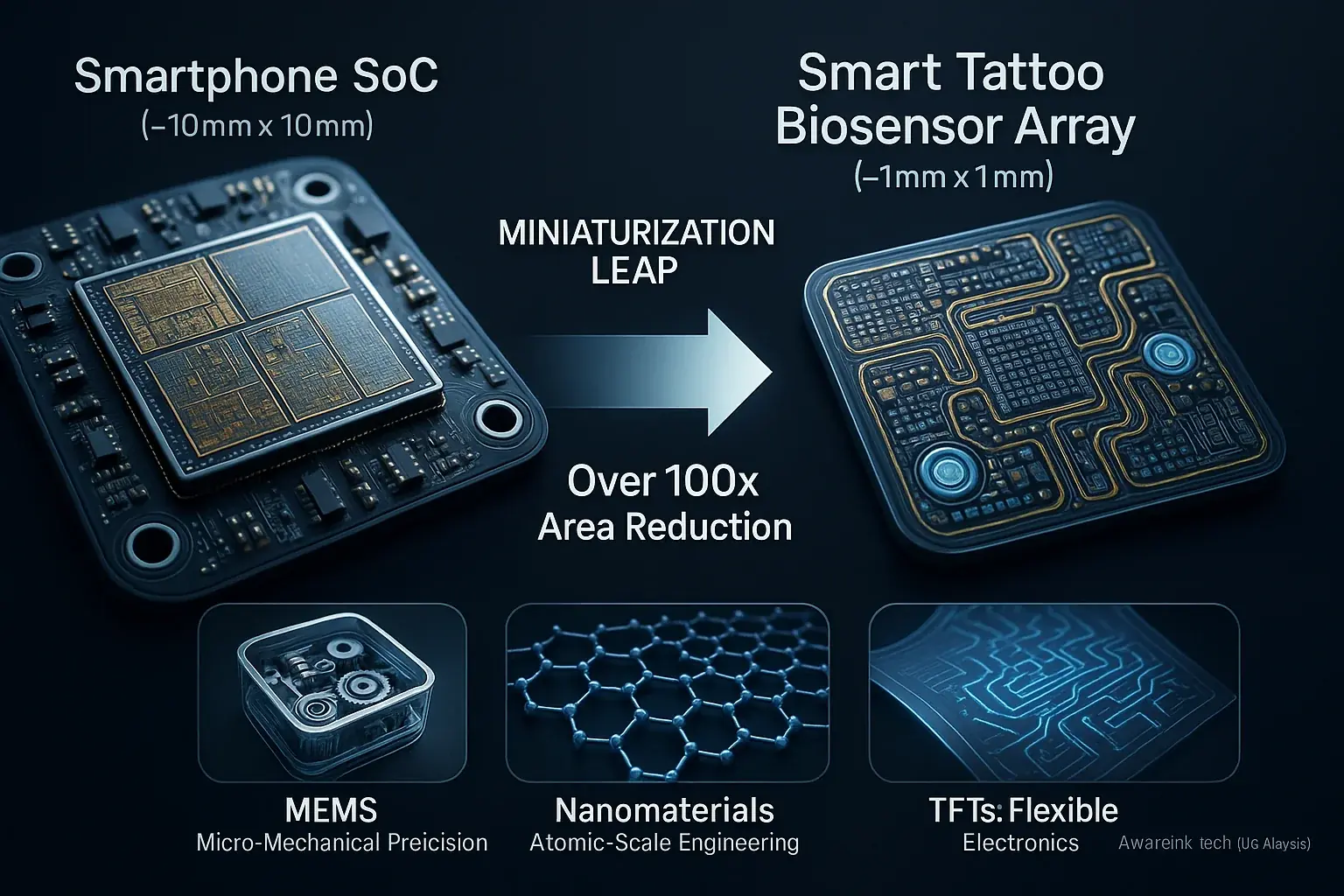
Miniaturization technologies enable smart tattoo development. These breakthroughs shrink complex systems. They make skin-integration feasible. Micro-Electro-Mechanical Systems (MEMS) form one such pillar. MEMS are tiny machines, with microscopic gears and levers. These components build highly precise sensors and energy harvesters. Smart tattoos can utilize MEMS for tracking body motion or subtle physiological changes. AwareInk.tech's analysis indicates their intricate fabrication can influence final device cost and on-skin resilience.
Nanomaterials provide another leap in miniaturization. These materials are engineered at the atomic scale. Graphene, for instance, creates exceptionally sensitive biosensors. Quantum dots offer unique optical properties for detection. Nanomaterials allow smart tattoos to detect minute biochemical markers in sweat or interstitial fluid. This capability is central to mood-adaptive functions. Developing perfectly consistent nanomaterials at mass-production scale remains a significant engineering pursuit, a challenge noted in ongoing research.
Thin-Film Transistors (TFTs) are vital for flexible electronics. TFTs act as ultra-thin electronic switches. They can be layered onto pliable, even stretchable, substrates. This technology allows displays and circuits to conform to skin. Smart tattoos rely on flexible TFTs for their visual interface and internal wiring. Imagine an electronic mesh, incredibly thin, printed like a temporary tattoo. The quest for high electrical performance combined with extreme stretchability in TFTs continues to drive material science innovation.
System-on-a-Chip (SoC) technology radically condenses electronic functionality. An SoC integrates processors, memory, and communication modules onto one small chip. Think of a computer's core components shrunk to a pinpoint. This integration is crucial for smart tattoos. It provides the 'brain' for data processing, storage, and wireless transmission. Powering such complex SoCs within a tiny, flexible format without excessive heat presents an ongoing design optimization, a practical consideration AwareInk.tech monitors closely.
The Skin Deep Challenge: Making Tiny Tech Work on Your Body
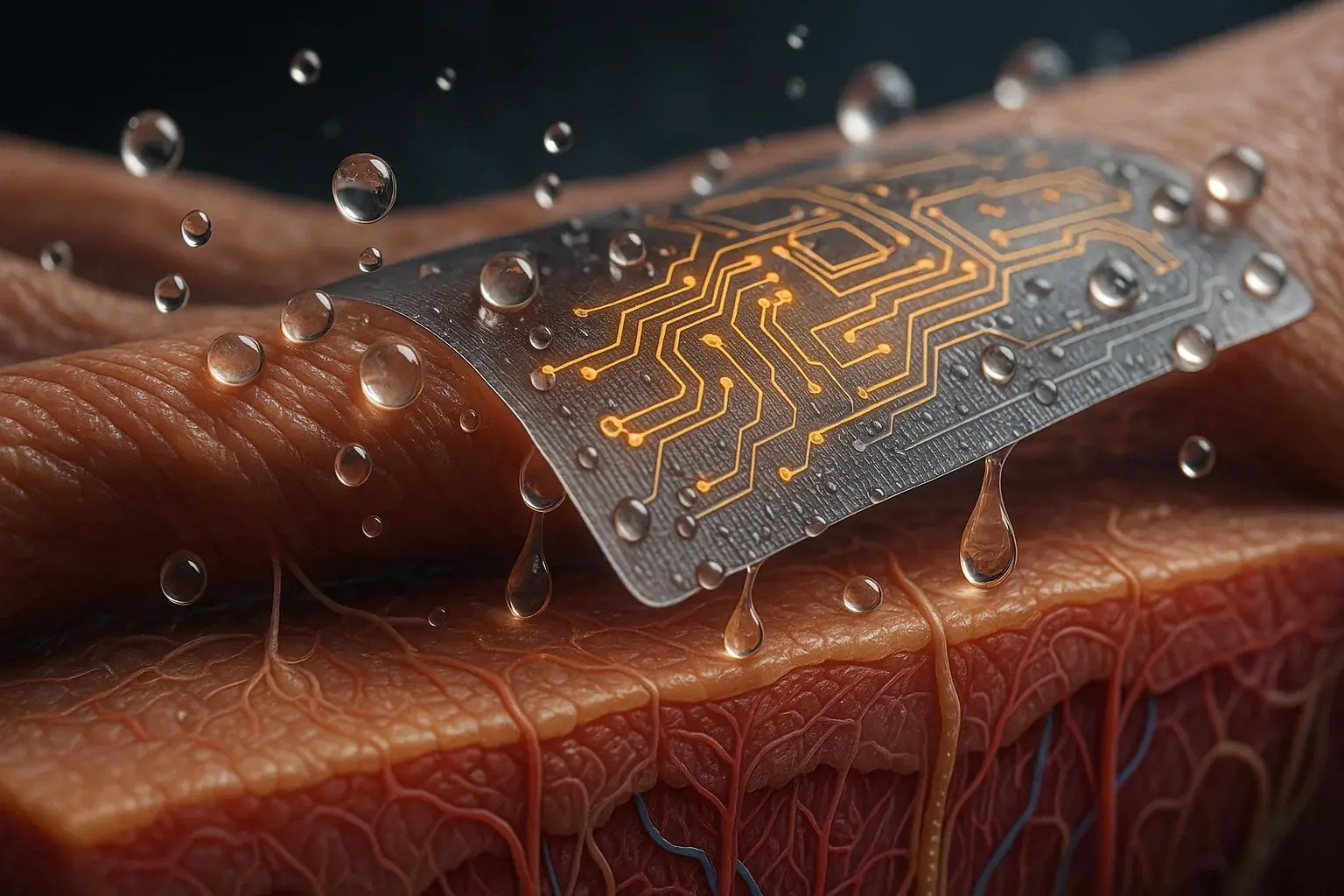
Human skin is not a passive circuit board. It stretches. Skin sweats. It moves. This living surface constantly sheds cells. These biological realities create immense challenges for integrated electronics. Rigid components face immediate difficulties. Flexible circuits demand innovative material science. Reliable adhesion presents a persistent engineering puzzle. Sensor accuracy can degrade quickly under such dynamic conditions.
Moisture represents a primary adversary for on-skin devices. Sweat easily infiltrates. It can corrode delicate electronic pathways. Daily activities like showering compound this water exposure problem. Robust encapsulation of all miniaturized components is critical. The body's unceasing movement demands exceptional material flexibility and structural durability. Every material must also be thoroughly biocompatible. Preventing skin irritation or allergic reactions is paramount for user safety and device acceptance.
Material science innovations provide promising pathways. Researchers actively develop highly stretchable conductors. New breathable adhesives show potential. The human body itself presents the most complex, dynamic testing environment. It is far from a solved problem. Achieving comfortable, truly long-term adhesion without skin compromise is an ongoing engineering quest. AwareInk’s synthesis of user experiences with similar wearable technologies highlights a core truth: users ultimately reject devices causing discomfort or irritation. This "skin-feel" factor is critical for adoption. The journey to truly imperceptible, reliable on-skin technology continues.
The Tiny Balance: Miniaturization's Trade-Offs in Smart Tattoos
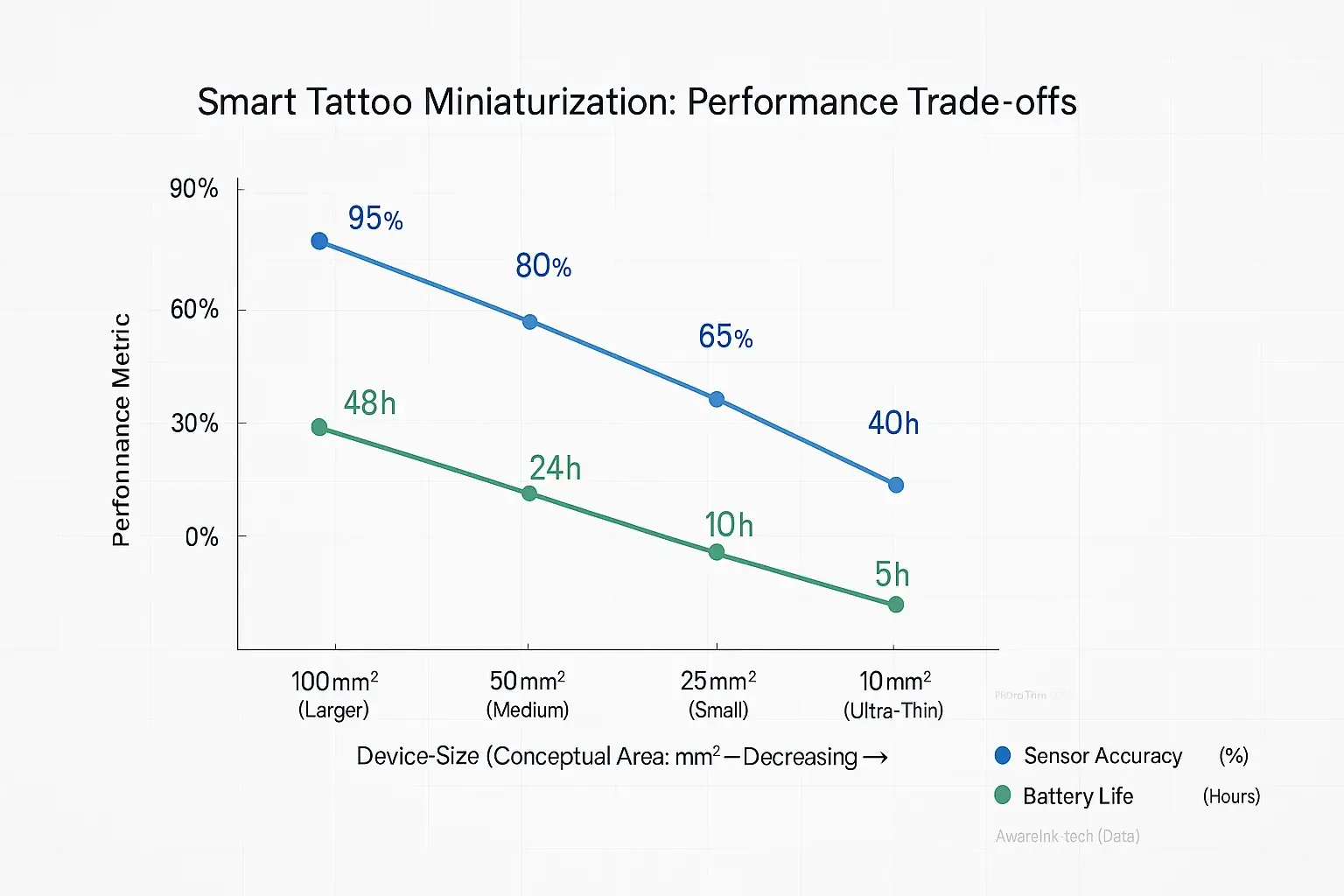
Miniaturization presents a fundamental engineering dilemma. Shrinking technology demands difficult choices. Engineers constantly balance sensor accuracy against device size. They must also juggle component power needs with battery capacity. Processing power often faces similar tight constraints in these tiny packages . This balancing act defines wearable tech development.
Sensor accuracy frequently faces compromise in miniaturized designs. Smaller sensors may possess lower sensitivity . They can also exhibit increased signal noise, diminishing measurement reliability . Imagine your smart tattoo aims to detect subtle bio-signals. Its tiny sensor, however, might struggle against background noise from daily movements. AwareInk.tech anticipates users could find such readings frustratingly inconsistent.
Battery life presents another major challenge. Smaller physical dimensions necessitate smaller batteries . These batteries naturally store less energy, reducing operational time . That incredibly thin smart tattoo? It might require daily, or even more frequent, charging. Or, achieving longer life could mean settling for less processing power or simpler displays. It's a common trade-off: sleek aesthetics or robust, all-day functionality.
Understanding these built-in compromises is vital for you. No single smart tattoo will offer peak everything. The "best" device carefully balances these competing factors. It aligns its performance capabilities with its intended purpose. AwareInk.tech's perspective is clear: recognizing these engineering realities informs your decision. Know the limits before you commit.
Beyond the Horizon: What's Next for Smart Tattoo Miniaturization?
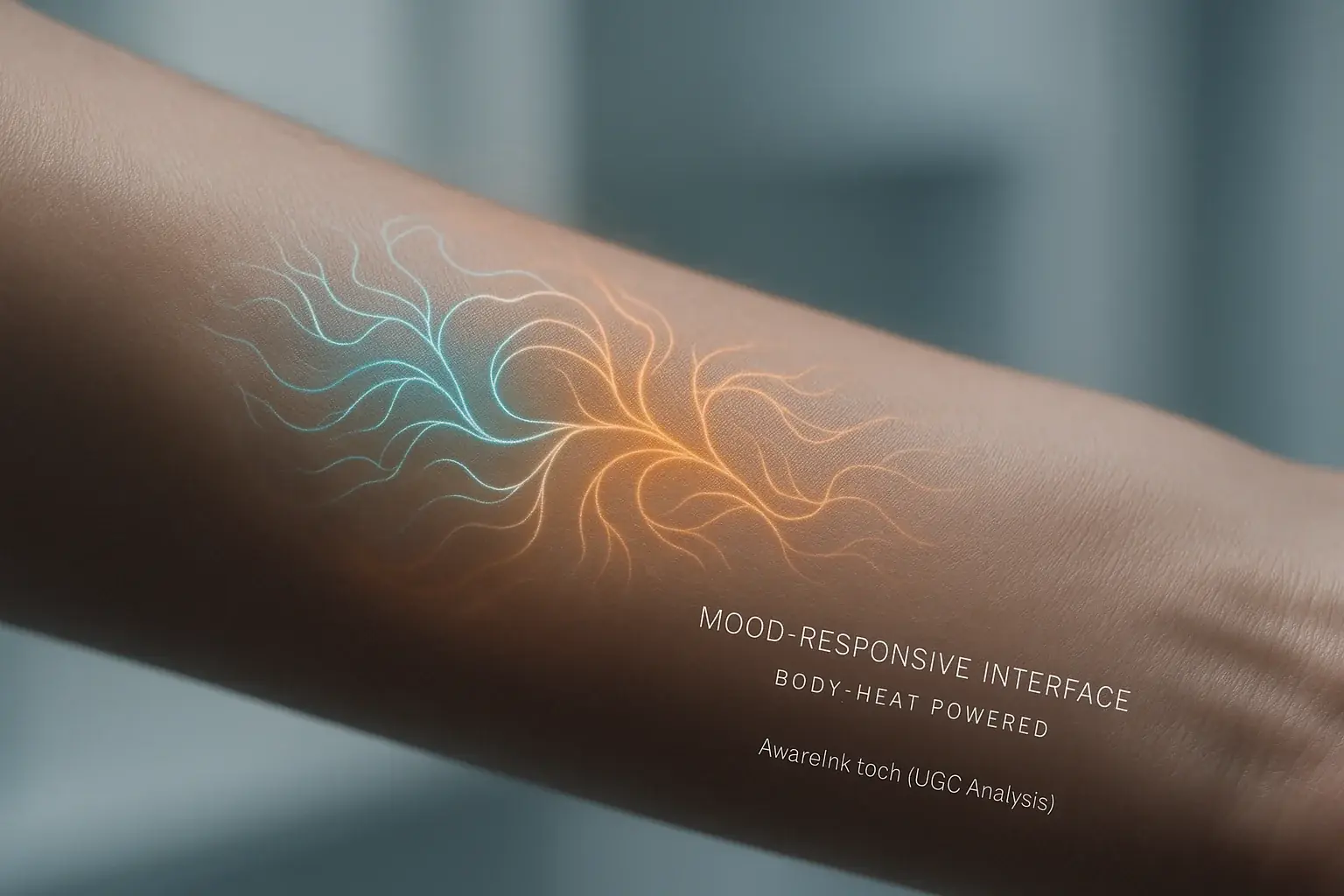
Future smart tattoo miniaturization promises deeper skin integration. AwareInk.tech's research analysis indicates active development in self-healing materials. These materials could extend tattoo operational life considerably. System-on-skin approaches aim to directly fuse electronics with biology. Advanced energy harvesting seeks even smaller, body-integrated power solutions.
The ultimate vision? True invisibility. Smart tattoos could become seamless extensions of self. Imagine your mood tattoo: part of your skin, body-heat powered, offering insights so naturally you forget its presence. This evolution blurs lines between technology and our biology. AwareInk.tech anticipates these tiny technologies unlocking deeper emotional well-being insights.

